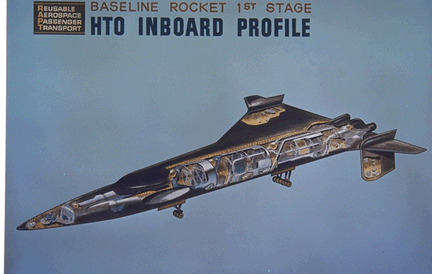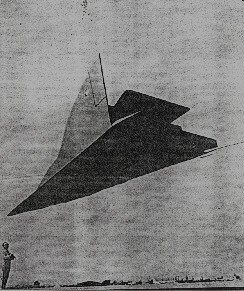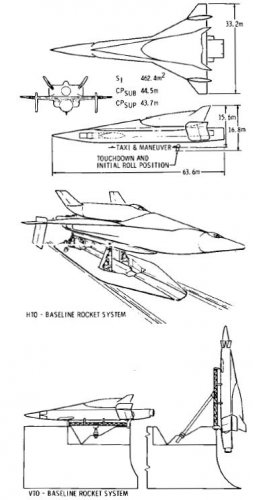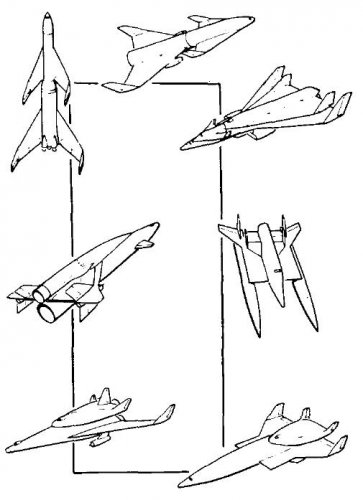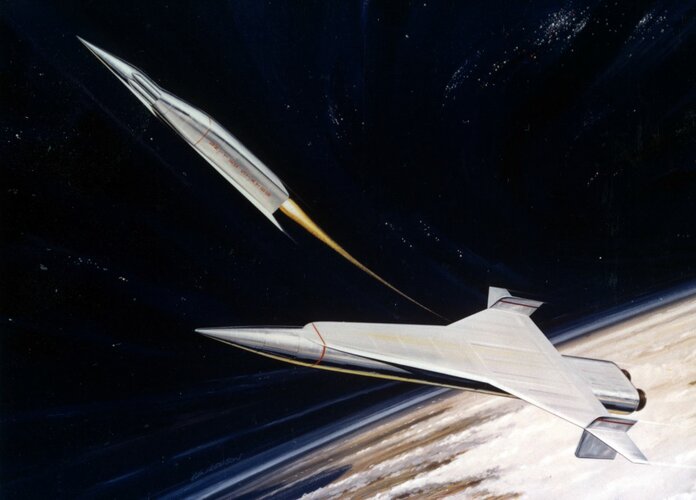vulture
ACCESS: Confidential
- Joined
- 25 September 2009
- Messages
- 96
- Reaction score
- 16
In 1966, Lockheed proposed a winged two stage to orbit system (manned) to the USAF. It was called RAPT = Reusable Aerospace Passenger Transport. The first stage was to use both air breathing and rocket propulsion. The second - orbital - stage, was a dart-like vehicle with folding wings. This vehicle was featured in an issue of Aviation Week & Space Technology in 1966. It was represented by a wooden mockup of the vehicle as a "lifting re-entry vehicle" And it is shown here being held off the ground by cables. This wooden mockup was 30-ft long and its folding wings could be articulated.

